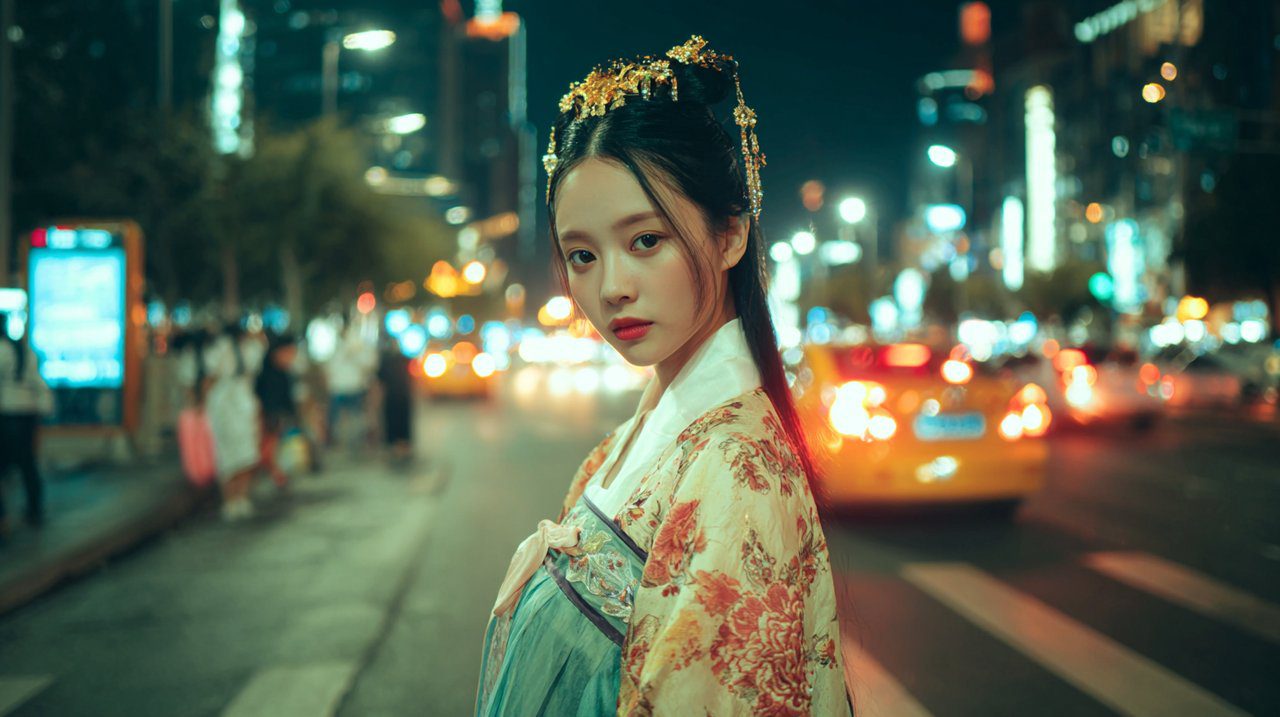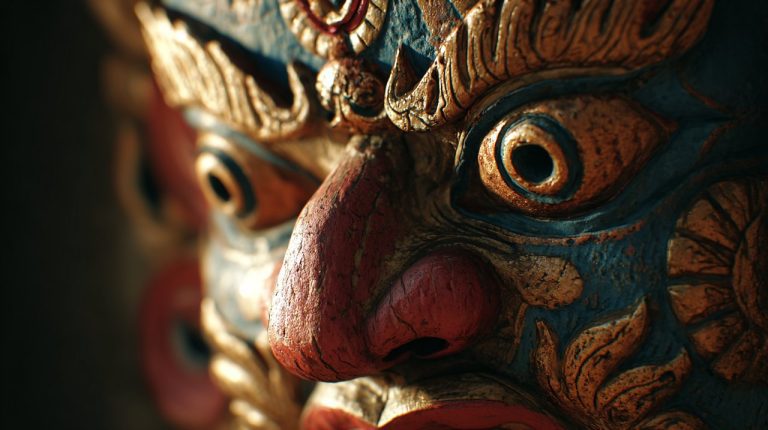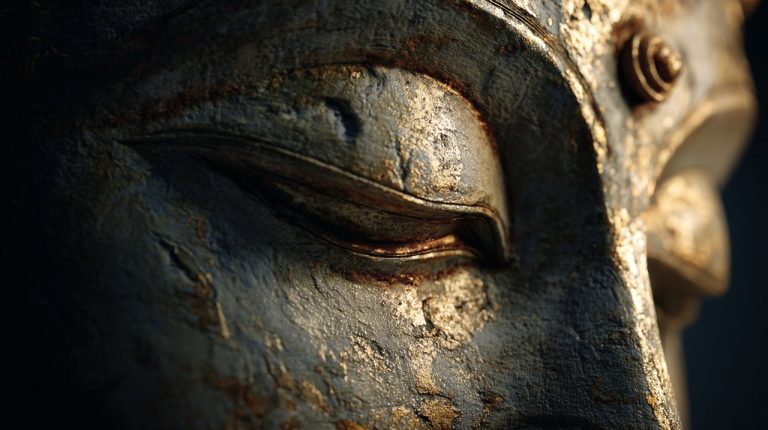Modern Hanfu: The Psychology of Bridging Past and Present
It’s easy to picture elaborate historical garments when we think of hanfu, often from period dramas. But what if the true power of this ancient aesthetic isn’t in rigid replication, but in its remarkable ability to adapt and enrich our contemporary lives? This is the core question driving modern hanfu’s evolution: it’s not merely a historical revival; it’s a conscious decision to weave a rich cultural heritage into the fabric of daily existence, fundamentally changing how to style modern hanfu outfits for everyday wear. 
The Evolution of Modern Hanfu: A Contemporary Cultural Expression
Modern hanfu represents both an innovation and a deliberate continuation of traditional forms. It moves beyond simple historical replication, thoughtfully adapting cuts, fabrics, and styles to suit contemporary wearing habits and aesthetic preferences. This evolution reflects a societal re-evaluation and a confident expression of cultural roots. It’s about consciously bringing heritage into the present.
Modern hanfu functions as a tangible link, offering a way to connect with tradition while embracing modernity. It allows us to experience classical East Asian aesthetics as a natural part of daily life.
Indeed, a growing number of people are effortlessly integrating these garments into their routines, often opting for lighter, more versatile styles that fit seamlessly into their busy schedules.
Tradition and Modernity: A Rational Analysis of Hanfu’s Evolution
To truly grasp modern hanfu, it’s essential to first clarify its core distinction from traditional hanfu. Traditional hanfu strictly adheres to historical forms, often designed for ceremonial occasions, demanding complex craftsmanship and specific wearing methods. Consider styles like quju (曲裾) and shenyi (深衣). While undeniably beautiful with their layered, cross-collared, and wide-sleeved characteristics, they are often quite impractical for the hustle and bustle of daily wear. Modern hanfu, however, brilliantly retains the spirit of hanfu while undergoing a thoughtful functional and aesthetic redesign. This isn’t about abandoning tradition, but about making it accessible. Here are some key differences that highlight this intelligent evolution:
- Simplified Forms: You’ll notice reduced layering and cuts that are much more tailored to modern body shapes. This makes them far easier to wear for everyday activities.
- Fabric Innovation: There’s a deliberate shift towards lighter, more breathable, and easy-care modern fabrics. Think comfortable cotton, soft linen, or elegant chiffon.
- Styling Freedom: Modern hanfu encourages playful mixing and matching with your contemporary wardrobe. This opens up a world of diverse and personalized styles.
This thoughtful modernization of hanfu is not a betrayal of tradition. Instead, it re-energizes its inherent value. Think of it as making ancient wisdom accessible and relevant for today’s context. Understanding the differences between traditional and modern hanfu helps us appreciate this evolution.
Practical Principles for Everyday Modern Hanfu Styling and its Psychological Impact
Integrating modern hanfu into daily life centers on balancing practicality and aesthetic appeal. It’s a way to express oneself with grace and confidence. Here are practical principles to guide your daily modern hanfu styling:
- Simple Styles: Prioritize pieces like jiaoling ruqun (交领襦裙), tanling banbi (坦领半臂), or Songku (宋裤) that feature simple cuts and fluid lines. These are not only easier to style but also feel more natural for everyday wear.
- Fabric Comfort: For daily wear, comfort is paramount. Choose breathable, skin-friendly fabrics such as cotton, linen, or modal. They ensure a pleasant wearing experience throughout your day.
- Modern Element Integration: Get creative by cleverly mixing and matching modern attire with your modern hanfu pieces. Imagine pairing a hanfu shangru (上襦) with your favorite jeans, or a hanfu half-skirt with a simple modern T-shirt. It’s a fantastic way to create a unique fashion statement.
- Accessory Accents: Thoughtfully balance your overall look with modern bags, footwear, and jewelry. Just as understanding the jade bracelet chinese meaning can add depth to an outfit, casual accessories like sneakers or canvas bags can effortlessly infuse your hanfu with an approachable, everyday sensibility.
Beyond these practical considerations, the act of choosing and wearing modern hanfu carries a deeper psychological weight. It’s in the daily engagement with these garments that we begin to understand their capacity for positive self-reinforcement. 
The ‘Positive Reinforcement’ of Hanfu: Cultivating East Asian Aesthetic Confidence
From an environmental psychology perspective, choosing to wear modern hanfu goes beyond a mere fashion statement. It’s a powerful act of self-identity and a profound instance of positive reinforcement for East Asian aesthetics. When we consciously integrate traditional elements into our daily lives, these garments function as constant visual anchors. They serve as a daily reminder, subtly yet powerfully affirming the value of our cultural heritage. This repeated engagement fosters a deeper appreciation for one’s own culture, cultivating a psychological sense of belonging and personal strength. It’s a form of embodied cognition, where the physical act of wearing something meaningful actively shapes our internal state. This is why symbolic adornments hold such power, much like wearing a Pixiu charm for good fortune. To understand more about how such items influence our mindset, consider Why Good Luck Bracelets Work: The Psychology of Embodied Cognition
Ultimately, the practice of daily modern hanfu styling offers a compelling path to cultural confidence and individual expression. It demonstrates how ancient aesthetics, when approached with a rational eye, can transcend time and breathe new life into our contemporary existence. Whether it’s a simple Han-element T-shirt or a complete, thoughtfully adapted hanfu ensemble, each choice injects vitality into this cherished East Asian aesthetic. It’s a clear example of how external choices can profoundly influence our internal landscape, fostering a deeper, more meaningful connection to our heritage. This isn’t just about what we wear; it’s about understanding the subtle yet powerful ways our clothing choices reinforce identity and cultural pride.
💡 Frequently Asked Questions
Modern Hanfu is an innovative continuation of traditional Hanfu that adapts through adjusted cuts, carefully chosen fabrics, and refreshed styles to suit contemporary wearing habits and aesthetic preferences. It aims to weave rich cultural heritage into everyday existence, moving beyond mere historical replication.
Traditional Hanfu strictly adheres to historical forms, often designed for ceremonial occasions and can be impractical for daily wear. Modern Hanfu, conversely, retains the spirit of Hanfu but features simplified forms with reduced layering, tailored cuts, uses lighter and breathable modern fabrics, and allows for greater styling freedom by mixing with contemporary wardrobes.
For daily wear, prioritize simple styles with fluid lines, choose comfortable and breathable fabrics like cotton or linen, integrate modern elements by mixing with contemporary attire (e.g., pairing a Hanfu top with jeans), and balance the overall look with modern accessories such as sneakers or canvas bags.
Wearing modern Hanfu is a powerful expression of self-identity and a positive reinforcement of East Asian aesthetics. It serves as a constant visual reminder of cultural heritage, enhancing the wearer's cultural confidence, sense of belonging, and empowerment by integrating tradition into daily life.







